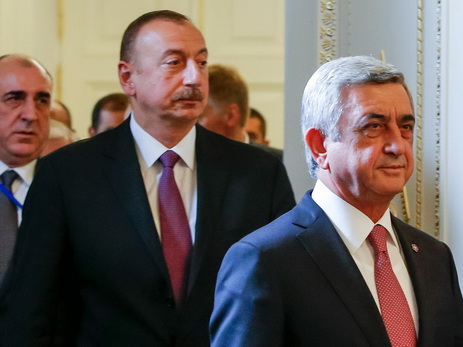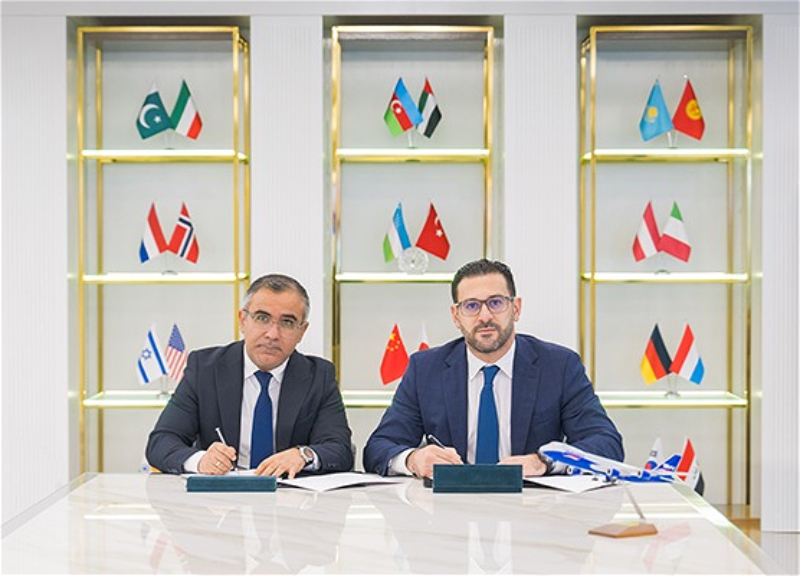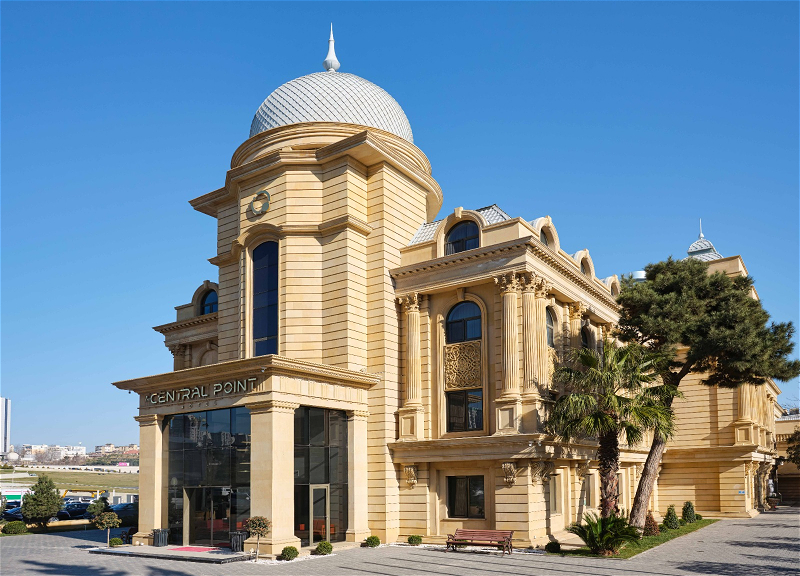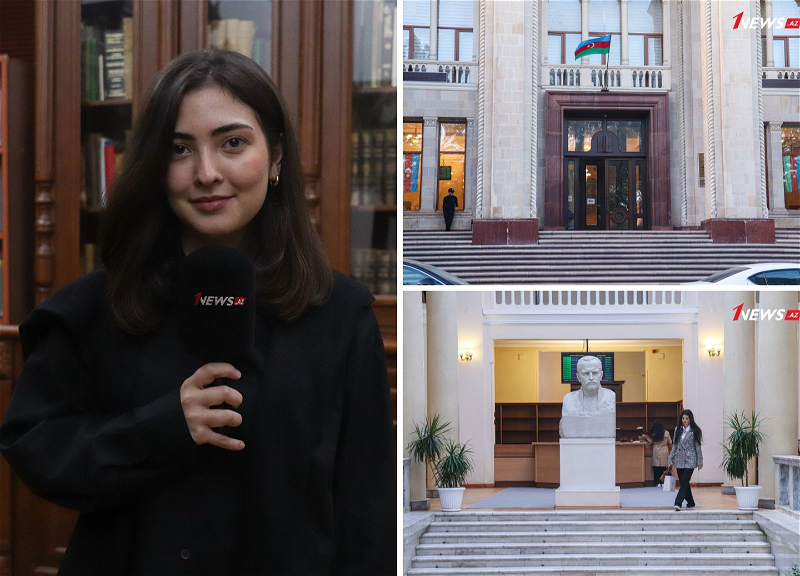Azerbaijan and the Four Day War: Breaking the Karabakh Deadlock

By Murad Gassanly, PhD candidate at the School of Politics and International Relations, Cardiff University
More than two months have now passed since the worst outbreak of hostilities between Armenia and Azerbaijan in the Nagorno Karabakh region in over 20 years. The fighting erupted on April 2nd and continued until the ceasefire agreement was signed by the Chiefs of Staff of Armenia and Azerbaijan at a meeting in Moscow on April 5th, after an intense Russian-led mediation effort. The Four Day War, as it came to be known, claimed over a hundred lives (although the casualty figures are still being disputed) and raised fears of a wider military conflict in the region (1, 2). Indeed, in an interview with Bloomberg on April 24th, Armenian President Serzh Sargsyan went as far as to claim that a full-scale war could “break out at any moment”.
However, despite widespread pessimism during the immediate aftermath of the fighting, the Four Day War brought renewed dynamism to the international mediation efforts. The flurry of diplomatic and political activity that followed it is in stark contrast to the previously moribund peace process. The end result was a meeting between the Armenian president and his Azerbaijani counterpart Ilham Aliyev on 16 May in Vienna, under the auspices of the OSCE Minsk Group – the international body at the helm of the Nagorno Karabakh peace process.
This was the first meeting between the Presidents since 2014 and although no written agreement was produced it does mark an important milestone and a new stage in the politics of the Armenian-Azerbaijani conflict. In a statement published after the talks, the OSCE Minsk Group Co-Chairs (Russia, US and France), represented by their respective foreign ministers, stated that the ceasefire regime must be respected and that there is no military solution to the conflict. It was also agreed that the next round of presidential talks, focusing on a comprehensive settlement of the Nagorno Karabakh conflict, will be held in June.
Whilst ostensibly the Co-Chairs are speaking in unison and there is an apparent consensus on their positions, Russian leadership of the international mediation efforts is now firmly established and this is being grudgingly recognised by Moscow’s critics and opponents in the United States and Europe (1, 2). Meanwhile, from the Azerbaijani perspective, the meeting in Vienna was a culmination of a sustained Russian political engagement aimed at restoring and then maintaining the ceasefire regime between Armenia and Azerbaijan, whilst leading the way towards a comprehensive settlement.
If anything, the Four Day War served to underline institutional weaknesses and the shortcomings of the OSCE Minsk Group format. In contrast to proactive Russian diplomatic efforts which led to the cessation of hostilities, the official international mediation body did not meet until after the ceasefire was signed. As fighting raged there were no emergency meetings of the Minsk Group co-chairs and very little diplomatic activity of any kind, except for generic statements.
The conflict thus further underscored Russia’s key role in the Karabakh peace process. This is something that Baku acknowledged from the outset. For example, in a statement on April 18th, Ali Hasanov, a senior aide to the President of Azerbaijan, announced that major talks and “intensive negotiations” are being planned, noting that, “the initiative came from Russian President Vladimir Putin”. Places stakes on Moscow to break the diplomatic deadlock and bring Armenia to the negotiating table appears to have been Azerbaijan’s key political objective in the aftermath of the Four Day War.
Unsurprisingly there was much opposition from the Armenian side. For example, on April 24th, in the aforementioned Bloomberg interview, President Sargsyan announced that Armenia would withdraw from negotiations with Azerbaijan. He claimed that it would be “unreasonable” to continue talks without certain security guarantees.
There is also an ongoing discussion in the Armenian parliament over Yerevan’s possible recognition of Nagorno Karabakh’s independence – a move that would effectively end the peace process. Meanwhile, on May 11th, a former Armenian Prime Minister claimed that the country possessed nuclear weapons.
It may well be that this apparent intransigence and sabre-rattling are driven primarily by domestic political considerations. Indeed, the reaction in Armenia to the renewed Russian-led diplomatic efforts was decidedly mixed. Furthermore, Armenian opposition parties are strongly against any territorial concessions to Azerbaijan, seeing captured regions as spoils of the first Karabakh war in 1991-1994. Serzh Sargsyan’s subsequent admission that Azerbaijani forces recaptured “more than 700 hectares of land” in the course of Four Day War further angered Armenian hard-liners and the opposition.
Despite this, however, the Vienna talks did take place and the political process has now restarted. Whilst it remains to be seen how this process will develop in the medium term and it is unlikely that there will be a quick breakthrough, Baku will nevertheless be satisfied with the renewed dynamism in what is now a predominantly Russian-led OSCE Minsk Group peace process.
Provisions for the creation of an OSCE ceasefire monitoring mechanism along the line of contact, as set out in the OSCE Minsk Group Co-Chairs’ statement after Vienna, reflect concern over renewal of armed hostilities. However, Farhad Mamedov, director of Azerbaijan’s influential Centre for Strategic Studies, argues that practice has shown that such measures are unlikely to build trust in the long run.
Yet President Aliyev did give verbal consent to the proposal and the development of “an OSCE investigative mechanism” will be discussed at the June meeting. It should be noted that Azerbaijani officials consistently maintain that the fighting on April 2nd, began with an intensive Armenian artillery strike and on April 4th, 2016, Elmar Mamedyarov, Azerbaijan’s Foreign Minister, wrote to international organisations informing them of “constant shelling of populated areas by Armenian army and deaths of civilians".
The Azerbaijani side continues to denounce Armenian ceasefire violations along the contact line with multiple incidents reported in May and early June. Baku therefore stands to benefit from the deployment of ceasefire monitoring missions, providing this move does not serve as an alternative to the political process towards a comprehensive peace settlement.
Because, for Azerbaijan the main cause of the conflict is the ongoing Armenian occupation of Azerbaijani territories and its failure to comply with four UN Security Council resolutions reaffirming the territorial integrity and sovereignty of Azerbaijan and demanding the withdrawal of Armenian troops (1, 2, 3, 4).
In addition to 250,000 refugees from Armenia, some 600,000 Azerbaijanis were forced to flee Karabakh and the seven other regions of Azerbaijan which came under Armenian occupation in 1991–1994 war and remains so to this day (1, 2). This status quo had persisted ever since the original 1994 ceasefire and is increasingly seen in Baku as intolerable. Thus, anything resembling a prolonged pause in the negotiation process is unacceptable. Therefore, from Baku’s perspective, the reset of the negotiation process and high-level international commitment to a comprehensive peace deal in the wake of the Four Day War represents material progress in Azerbaijan’s wider international political strategy on the Karabakh issue.
And Baku is feeling increasingly confident about its position in the conflict. First, there is a growing international legal recognition of Azerbaijan’s case on Nagorno Karabakh. For example, the European Court of Human Rights passed a judgement last year, confirming that the Republic of Armenia "exercised effective control over Nagorno-Karabakh and the surrounding territories" (rather than the so-called “NKR” authorities), which carries long-term international legal implications.
Second, it is important to recognise that whilst Azerbaijan’s foreign policy is structured by and pivoted on Karabakh, it is premised on securing the wider goal of long-term sovereignty and independence. Therefore, its component parts are varied and finely balanced. For example, the Russian security partnership with Armenia is well known but it is worth pointing out that Azerbaijan and Russia also enjoy close economic and political relations. The Declaration on Friendship and Strategic Partnership between the Republic of Azerbaijan and the Russian Federation was signed back in 2008 and since then the two countries saw bilateral trade growth reach 10% per annum, hitting $2.6 billion in 2014 (1, 2). Speaking in Baku on April 8th, 2016 Russian Prime Minister Dmitry Medvedev welcomed the successful development of the Russian-Azerbaijani “strategic partnership”.
Similarly, Deputy Premier Dmitry Rogozin, who also visited Baku after the Four Day War, discussed Russia’s military cooperation with Armenia and Azerbaijan in the context of contractual obligations and strategic partnerships with both countries. Russian arms sales undoubtedly play a key role in Azerbaijan’s armament strategy, as Baku seeks to reform and modernise its military – this is something that has not been lost on international observers and commentators.
Meanwhile, on May 15th, the day before Vienna talks, Azerbaijan’s Defence Minister announced plans for joint Azerbaijan-Georgia-Turkey military exercises aimed at enhancing “cooperation in the field of cybersecurity and the protection of oil and gas pipelines”.
Then, on May 17th, the day after Vienna talks, the start of construction of the Trans Adriatic Pipeline (TAP) was marked in a special ceremony held under the auspices of the Greek Prime Minister Alexis Tsipras in Thessaloniki, Greece. TAP is an essential component in the BP-led Southern Gas Corridor Project, designed to bring Azerbaijan’s natural gas reserves (around 10bcm per annum) from the Caspian to Europe.
These developments hint not only at the extent and complexity of Azerbaijan’s foreign policy ambitions and security-enhancing measures but also at an inherent risk-aversion of such a multi-faceted and quintessentially pragmatic policy. Azerbaijan generally prefers an incremental, step-by-step, stage-by-stage approach to achieving its foreign policy goals and Baku’s actions in the Four Day War should be viewed in this context – the pursuit of limited tactical goals on the battlefield and the unlocking of the peace process on the diplomatic field.
On the first issue, Armenian President was forced to admit that Azerbaijan scored some territorial successes during the fighting, although he claimed these had no strategic value to the Armenian side (1, 2). However, the fact that senior Armenian military and intelligence officials, including deputy defence minister and the chief of military intelligence, have been sacked suggests that Yerevan acknowledges the seriousness of the challenge posed by Azerbaijan’s military advance and the shortcomings of its own response. In turn, Azerbaijan’s confidence in its military capabilities has increased greatly in the wake of the Four Day War – in fact, this was Baku’s first military success since the war in the 1990s.
On the second issue, as already mentioned, Azerbaijan achieved the resumption of the negotiation process with the Vienna meeting on 16 May setting out a framework for renewed engagement on key principles of a comprehensive settlement of the Karabakh conflict. Here, Azerbaijan will again insist on a step-by-step approach, with a commitment to non-use of military force conditioned upon withdrawal of Armenian troops from the regions around Nagorno Karabakh as the first step. The liberation of Azerbaijani regions would render use of force impossible, leading towards the next stages of negotiations, including on the final status of Nagorno Karabakh. Azerbaijan’s current priority, therefore, is securing liberation of the occupied regions, in line with specific requirements of the UN Security Council Resolutions, whereas other issues are deferred to later stages of the peace process.
For over twenty years Armenia has been engaged in what one political expert described as an imitation of the negotiations - feigning participation without ever committing to any concrete proposals, whilst playing for time. The Four Day War marked an abrupt end to this strategy and it may be tempting for Yerevan to attempt to restore the status quo.
However, it is essential to recognise that whilst Azerbaijan does not wish for a full scale war, it will no longer tolerate military occupation of its territories and the use of force against its soldiers and civilians. It is not a question of whether Azerbaijan is prepared to use force – the Four Day War demonstrated that it is. As Farhad Mamedov argues, artificially prolonging the process is likely to lead to further escalation on the frontline. Full implementation of UN Security Council resolutions, withdrawal of Armenian forces from the occupied territories, the right of return of Azerbaijani refugees and respect for Azerbaijan’s territorial integrity and sovereignty - these are Azerbaijan’s red lines.
It should be noted that these are not incompatible with the legitimate right to self-determination and security needs and concerns of both Armenian and Azeri communities of Nagorno Karabakh, as well as those of Armenia. Yet, the issue of the final political status of Karabakh cannot be prioritised above the return of refugees and the withdrawal of Armenian troops from the occupied regions – any settlement must be built upon a complex and incremental resolution process.
Azerbaijan could, in principle, make a legally binding commitment not to resort to the use of force, but what has changed with the Four Day War is Baku’s insistence that the bulk of occupied territories must be liberated as a precondition to such a commitment. This, in turn, can only come as part of a comprehensive peace agreement.
Original publication: Russian International Affairs Council














